
OR
Nepal within an inch of transforming into electricity self-reliant economy
Published On: May 16, 2023 11:00 AM NPT By: RAJESH KHANAL
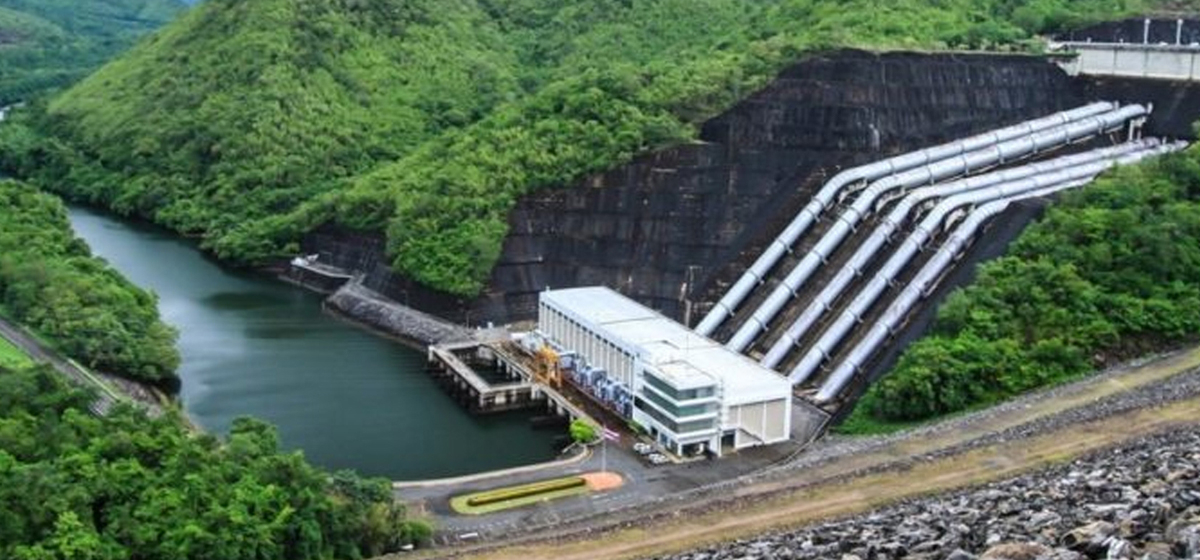
The past year was marked by high hopes for achieving a notable goal in the electricity business, in line with the aspirations of the nation. The achievements of last year have largely established the confidence that the development of the energy sector can make the nation prosperous. Nepal has achieved a reasonable amount of electricity production and has now begun looking to export its surplus energy to neighboring countries. Furthermore, the sufficient production has led to a paradigm shift, transforming Nepal from a country affected by load-shedding to one that can boost local consumption to its optimum level.
Current production
Based on the latest statistics released by the Nepal Electricity Authority (NEA), Alternative Energy Promotion Center (AEPC), and private sector power producers, the country currently has an installed capacity of producing approximately 2,700 MW of electricity. Out of the total capacity, 2,492.95 MW is connected to the national grid, while the remaining 84.53 MW is designated for off-grid supply.
As of mid-April 2022, Nepal's total installed electricity generation capacity had reached 2,191 megawatts, reflecting an increase of over 500 MW in the past year. This growth has allowed Nepal to become self-sufficient in electricity production, generating 11,064 GWh in 2022, a three-fold jump from 4,258 GWh in 2013.
Out of the total installed capacity of 2,689 MW, the NEA-operated companies and its subsidiaries have been producing 1,139.44 MW, while the private sector has installed power plants with a capacity of 1,392.92 MW. In addition, small hydropower projects and alternative energy sources have been producing 4.53 MW and 80 MW, respectively, which are recorded under off-grid supply.
According to NEA records, 32 privately-run power projects supplied a total of 552.119 MW of electricity between mid-April 2022 and mid-March 2023, generated from both hydropower and solar plants.
NEA reports that the largest private sector investment project to come online during the period was the 86 MW Solu-Dudhkoshiproject. Out of the total supplied amount of 552.119 MW, 523.319 MW was produced from 28 hydropower plants, while the remaining 28.8 MW was produced by four solar plants.
In addition, there are nine projects currently at the stage of test production, with a total production capacity of 157.470 MW. This includes three solar plants with a combined capacity of 18.8 MW, and six hydropower plants with a total capacity of 138.67 MW.
It is projected that the country will produce an additional 800 MW of electricity in the current fiscal year, bringing the total production capacity to over 3,000 MW. Major hydropower projects expected to come online by the end of the fiscal year include the 111 MW Rasuwagadhi, 57.3 MW Sanjen and Upper Sanjen, 102 MW Madhya Bhotekoshi, and 54 MW Super Dordi.
Furthermore, NEA and private sector promoted projects with a combined capacity of 3,300 MW are currently in various stages of construction. Additionally, 240 projects have conducted feasibility studies to produce 11,716 MW of electricity and are waiting to carry out power purchase agreements.
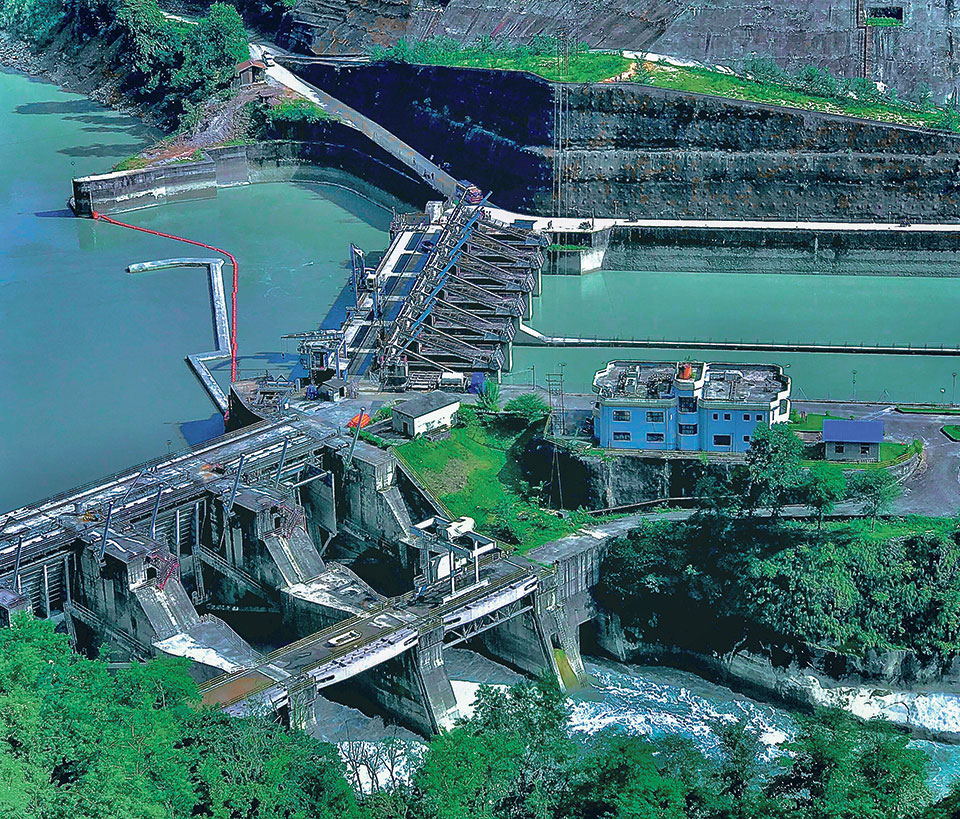
Domestic consumption
When compared to developed countries like Canada and the US, which have per capita electricity consumption of 16,405 kilowatt-hours and over 12,314 kWh per capita per year, respectively, Nepal falls far behind in the statistics. Iceland and Norway are at the top of the list, with per capita consumption of 52,980 kWh and 27,529 kWh per year, respectively. In contrast, as of mid-April 2022, Nepal's per capita electricity consumption stood at a mere 325 kWh. The government has set a target to increase this to 700 units by 2024.
Recently, there has been a noticeable shift towards using electricity for daily household activities in Nepal. Furthermore, there has been a significant decline in the import of liquefied petroleum gas, which suggests that domestic consumption of hydropower is on an upward trend.
According to records from the Nepal Oil Corporation, the import of LPG decreased by 19.2 million kg (1,352,112 cylinders) in the first eight months of the fiscal year 2022/23 compared to the entire consumption of the previous year. As a result, import-based Nepal saved Rs 1.91 billion from LPG imports during the review period. "The increasing use of electric stoves in Nepal's urban areas could eventually replace LPG, which is currently consumed in large quantities," said NOC Spokesperson Binit Mani Upadhyaya.
Growing prospect of cross-border electricity trade
The Nepali year 2079 BS has been a turning point for Nepal, a water resource-rich country, in terms of exploring new opportunities for electricity exports. Unlike the previous year, when cross-border energy trade was carried out at the government level, Nepal started selling its electricity to the Indian market through a bidding process at the Indian Energy Exchange (IEX) for the first time.
Similarly, Nepal has also earned significant revenue by exporting electricity to India. From June to December 2022, the country earned Rs 11 billion by selling electricity to its southern neighbor, with rates ranging between Rs 6.58 and Rs 12.15 per unit. This income from electricity export was the third largest from the export of a single commodity in the fiscal year 2021/22.
Nepal exported 39 MW of electricity to India under the IEX after signing the India-Nepal Power Trade Agreement in 2014 during Indian Prime Minister Narendra Modi’s visit to Nepal. It's worth noting that Nepal is the first of India's neighbors to participate in the IEX.
In response to Nepal’s request to extend the limit, Indian government since November 2022, has allowed the landlocked country to export up to 408 MW of electricity generated from eight projects, according to NEA.
In the latest development, Nepal is looking forward to signing a long-term intergovernmental agreement with India to sell its excess power to its southern neighbor during the upcoming visit of Prime Minister Pushpa Kamal Dahal to India. According to Dinesh Ghimire, Secretary at the Ministry of Energy, Water Resources, and Irrigation, the government is proposing a 25-year agreement to the Indian side. "The long-term intergovernmental agreement is currently being discussed at the ministry," he said.
Similarly, Nepal is exploring the possibility of exporting electricity to Bangladesh, which has shown interest in purchasing power from its northern neighbor. While Bangladesh has been meeting its energy needs primarily through coal, fossil fuels, and natural gas, it has set a target to reduce its carbon emissions by 22 percent by 2030. Meanwhile, Nepal is also looking to expand its cross-border energy trade beyond India.
Bangladesh has approved the purchase of 50 MW of electricity generated by Nepali power plants. In addition, India has proposed the export of 50 MW of electricity from Nepal's hydropower projects to Bangladesh, subject to certain conditions. If all goes as planned, the two countries aim to commence bilateral energy trading from the rainy season of 2023.
Nepal has also been looking forward to selling its electricity to Bangladesh by building dedicated transmission lines via India.
Bangladesh has expressed its interest in purchasing 500 MW of electricity out of the total production of 900 MW from the Upper Karnali Hydropower Project, subject to approval from the Indian government. Additionally, Bangladesh is also considering investing in the 683 MW Sunkoshi-3 and 1,547 MW KhimtiShivalaya hydropower projects, and purchasing electricity produced by these power plants.
Prospect of alternative renewable energy
The government has set a goal of generating 15,000 megawatts of electricity by 2030, with alternative energy contributing about 10 percent to this plan. Among various sources of alternative energy, solar power projects are attracting more investors.
In the initial phase, solar power was primarily used for household electrification, but it is now being developed for commercial use as well. According to KulmanGhising, the managing director of the NEA, they have planned to use an energy mix to ensure sustainable energy security, including solar power.
The NEA has launched a 25-MW solar project in Nuwakot, which is currently operating at around 50% capacity. In addition, four other solar projects are currently producing power with a total capacity of 20 megawatts. The Kathmandu UpatyakaKhanepani Management Board is also operating a solar power plant with a capacity of 0.68 megawatts in the Kathmandu Valley. These efforts demonstrate Nepal's commitment to developing solar power as part of its energy mix.
Likewise, the Bishnupriya Solar Farm is producing one-megawatt power, the Ridi Hydropower as a grid-connected solar power project is producing 8.5 megawatts of power in Rupandehi and the Mithila Solar PV Power Project is generating 10 megawatts of power in Dhanusha.
The NEA is also planning to construct solar power projects with installed capacities of approximately 6 MW in Pratappur Rural Municipality-7 Suryapura, Nawalparasi (BardaghatSusta West) on the barren land owned by the Gandak Hydropower Project. Additionally, a solar power project with an installed capacity of approximately 9 MW will be constructed on the land owned by the Middle Marsyangdi Hydro Project located in Lamjung, as well as the Jhuprakhola Micro-hydro Project located in Surkhet, according to Ghising.
According to NEA, the Duhabi Solar (8 MW), Baki Block Solar-1 (10 MW), and Bhrikuti PV solar (8 MW) projects are expected to start production by the end of this fiscal year. The Department of Electricity Development has received applications for survey from 33 solar projects with a combined capacity of 408 MW, as per their records.
Commitment for zero-carbon emission
In the UN climate conference held in Glasgow in November 2021, Nepal expressed its commitment to reach a net zero emissions by 2045. This would mean that by 2045, Nepal would not emit more greenhouse gas than it saved (i.e., net zero). Similarly, the country committed that 15 percent of its total energy demand would be supplied from clean energy sources. Another commitment was to maintain a 45 percent forest cover by 2030.
Nepal also committed to ensuring that 5-10 percent of its power generation capacity comes from mini- and micro-hydro power, solar, wind and bio-energy renewable energy plants.
To keep these promises made to its foreign partners, Nepal needs to focus on producing more hydropower along with increasing its accessibility and affordability at the grassroots. This also calls for harnessing the potential alternative energy apart from hydropower, while the country is moving in a right direction with a notable growth in production of hydroelectricity and solar power and green hydrogen of late.
Biraj Singh Thapa, chief of Green Hydrogen Lab of the Kathmandu University, said they have started preparationsfor installing a 100 MW green hydrogen plantby 2024.
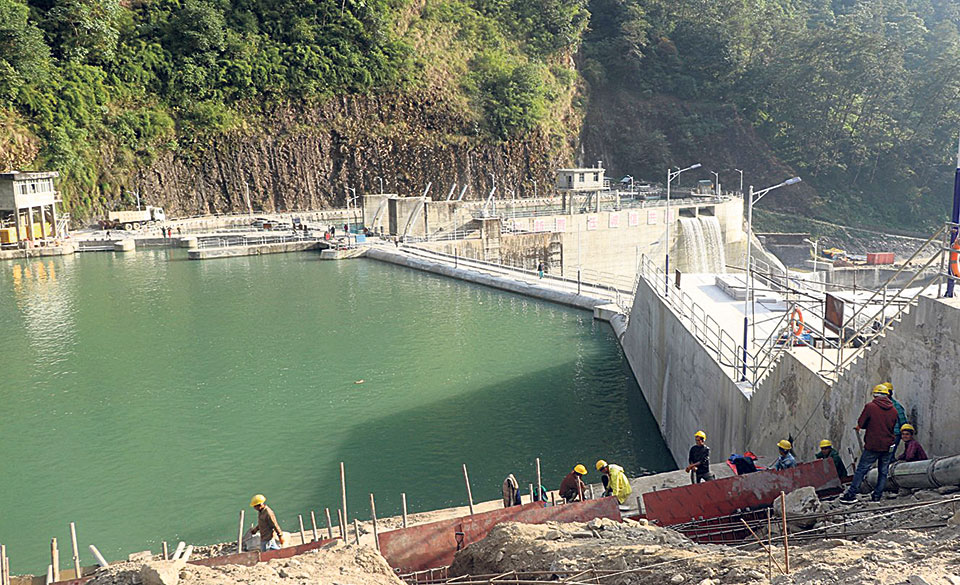
Challenges
Currently, hydropower constitutes only two percent of Nepal's energy generation, and the country aims to increase its reliance on clean energy sources to meet 15 percent of its energy demands by 2030. As part of this effort, Nepal submitted its updated Nationally Determined Contribution in December 2020, outlining plans to generate 5,000 megawatts of electricity from hydropower using its own financial and technical resources by 2030. The conditional target is to generate 15,000 megawatts of electricity by 2030, with 5-10 percent coming from sources such as solar, wind, and bioenergy.
There is a significant concern about the reliable supply of hydroelectricity in the future due to various challenges, including climate change. Nepal faces multiple challenges that threaten the country's energy security, and the development of its hydroelectric sector is vulnerable to the impacts of climate change, which can have significant economic consequences. The country is also highly susceptible to natural disasters such as floods, earthquakes, and landslides, which can increase capital and operational costs, result in lost revenue from plant stoppages, and lead to loss of property and human lives.
Currently, 96.2 percent of Nepal's installed capacity is from hydropower, 3.7 percent from thermal and only 0.1 percent from solar plants. Despite this, only 68 percent of the 8.8 GWh electricity consumed in Nepal in 2021 was generated domestically, with the remaining 32 percent being imported from India.
The biggest challenge facing Nepal's energy sector is the variability in hydropower generation. During the wet season, there is excess electricity, but during the dry season, there is insufficient generation, leading to significant electricity imports from India. Moreover, export-oriented hydropower projects will require an additional investment of $0.5-1.0 billion annually, which will be difficult for Nepal, given its limited capital resources.
You May Like This
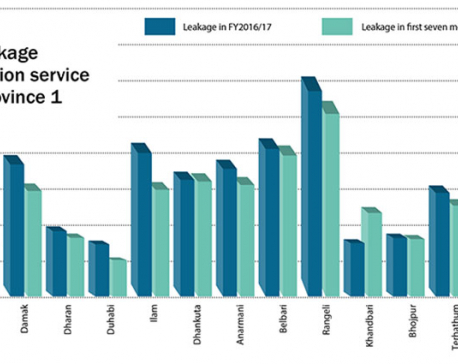
Electricity leakage in Province 1 down by 4 percentage points: Nepal Electricity Authority
KATHMANDU, March 14: Leakage and technical loss of electricity in Province 1 has decreased by 3.91 percentage points to 13.74 percent... Read More...
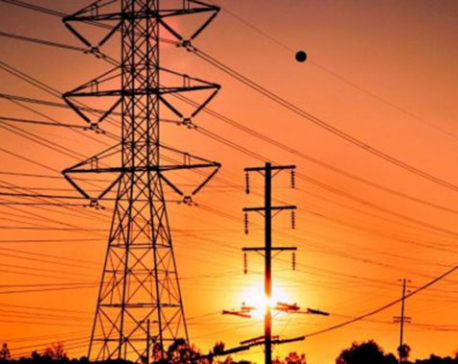
Govt misses per capita energy consumption target
KATHMANDU, Aug 13: Though the government has already ended scheduled power cuts ensuring round the clock electricity supply, per capita consumption... Read More...
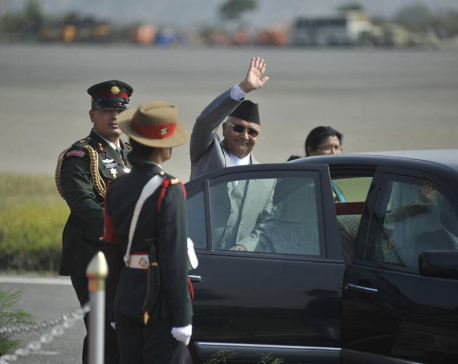
What Nepal needs is India's friendship and support for growth: Nepal PM Oli
In an exclusive interview to The Hindu, Mr. Oli says the bitterness of past relations have been put behind them,... Read More...






Just In
- Challenges Confronting the New Coalition
- NRB introduces cautiously flexible measures to address ongoing slowdown in various economic sectors
- Forced Covid-19 cremations: is it too late for redemption?
- NRB to provide collateral-free loans to foreign employment seekers
- NEB to publish Grade 12 results next week
- Body handover begins; Relatives remain dissatisfied with insurance, compensation amount
- NC defers its plan to join Koshi govt
- NRB to review microfinance loan interest rate











Leave A Comment